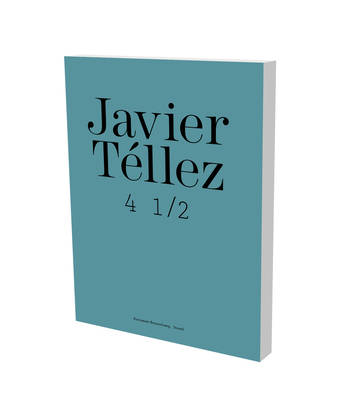
- Retrait gratuit dans votre magasin Club
- 7.000.000 titres dans notre catalogue
- Payer en toute sécurité
- Toujours un magasin près de chez vous
- Retrait gratuit dans votre magasin Club
- 7.000.0000 titres dans notre catalogue
- Payer en toute sécurité
- Toujours un magasin près de chez vous
39,95 €
+ 79 points
Description
How did you do this Mr. Téllez? This catalog documents the first museum-based solo exhibition in Germany by the New York artist Javier Téllez (born 1969 in Venezuela). This monograph would seem to be long overdue in view of the fact that the artist has already taken part in innumerable group exhibitions, such as the Biennials in Venice (2001 and 2003), Sydney (2004) or the Whitney Biennial (2008), as well as Manifesta 7. Javier Téllez, whose work oscillates between fiction and documentation, reinterprets classic material from the stage and screen, and deconstructs accustomed socio-cultural boundaries. Alongside installations by the artist, the Kunstverein also presented Téllez's four most important films. »La Passion de Jeanne d'Arc« (Rozelle Hospital, Sydney; 2004) is regarded as being exemplary for Téllez's pioneering film production. The reworked silent film »Jeanne d'Arc« (1928) and the film »Twelve and a Marionette«, which was shot in a psychiatric clinic, were shown as a double projection. Twelve women speak in very different ways about the institutional treatment of their illnesses (depression, schizophrenia). The juxtaposed projections of Jeanne d'Arc - who was stigmatized and persecuted in her day as a soul possessed and is recognized nowadays as a misunderstood visionary and national hero - place the patients' maladies in an altogether new light. In the film »Oedipus Marshal« (2006), Téllez stages Sophocles'classic tragedy, »Oedipus Rex«, with Western costumes and Japanese masks. An abandoned gold rush town in Colorado served as the backdrop. The masks and maskings in Téllez's films introduce a meta level. As ambivalent elements, they both conceal or demystify them at the same time; they destabilize personality boundaries, but also symbolize the facility that psychiatric patients - whom Téllez tends to employ as actors - have for mimicry. »Letter on the Blind for the Use of Those Who See« (2007) draws on the eponymous classic by Diderot and the Buddhist parable of the blind men and the elephant. The parable makes us aware of the fact that »reality« is by no means an objective constant, but defined instead by our own perception. Téllez's film »Caligari und der Schlafwandler« (Caligari and the Sleepwalker; 2008), is based on the 1919 Expressionist silent film, »The Cabinet of Dr. Caligari«. In Telléz's interpretation, Dr. Caligari carries out a kind of therapeutic conversation with Cesare, who has been in a kind on somnambulist state for years and can only communicate by means of slabs of slate. The mixture of layers of reality, changes of identity, and polyphony are common thematic strands taken up by, but also implemented in terms of representational techniques by Téllez's films. By selecting the Erich Mendelsohn's icon of Expressionist architecture, the Einstein Tower in Potsdam, as the location for the film, he also points to an epoch of art and film history in which pathological disturbances were addressed for the first time and inspiration duly drawn from them.
Spécifications
Parties prenantes
- Auteur(s) :
- Editeur:
Contenu
- Nombre de pages :
- 160
- Langue:
- Anglais
Caractéristiques
- EAN:
- 9783940953483
- Date de parution :
- 31-12-18
- Format:
- Livre broché
- Format numérique:
- Trade paperback (VS)
- Dimensions :
- 208 mm x 267 mm
- Poids :
- 566 g

Les avis
Nous publions uniquement les avis qui respectent les conditions requises. Consultez nos conditions pour les avis.






